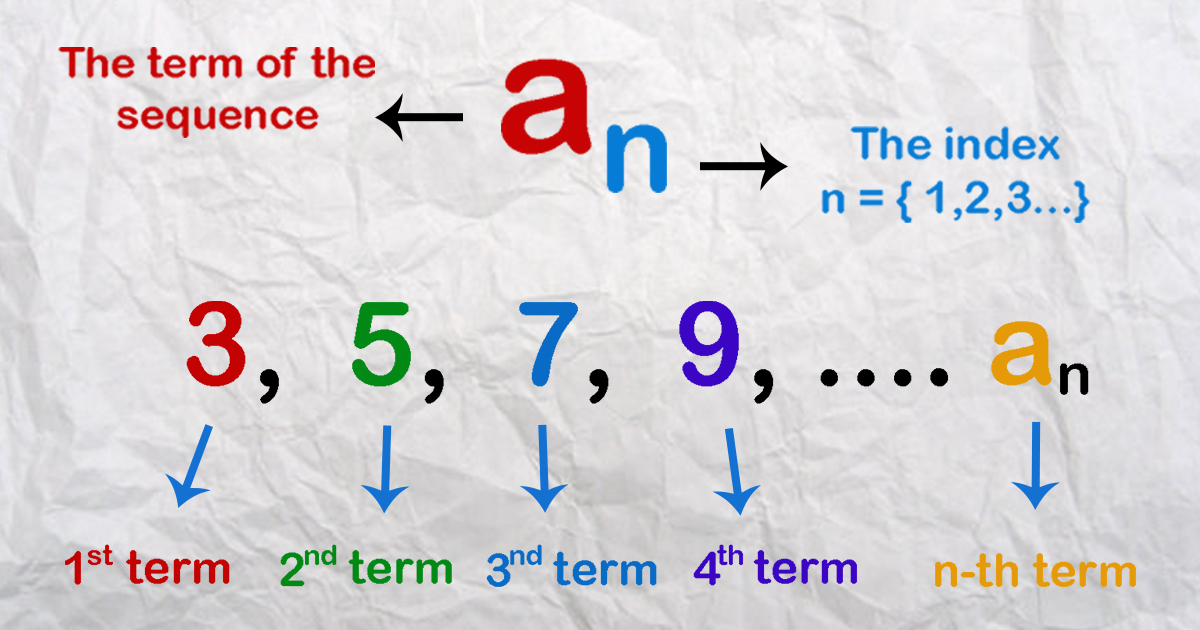


Sequences can have formulas that tell us how to find any term in the sequence. For example, 2,5,8 follows the pattern 'add 3,' and now we can continue the sequence. Some sequences follow a specific pattern that can be used to extend them indefinitely. There are many more complex sequences, and it is possible for a given sequence to be able to be defined using different rules or equations, but these are the basics of sequences. Sequences are ordered lists of numbers (called 'terms'), like 2,5,8. This allows us to determine any term in the sequence, where x n is the term, and n is the term number, or position of the term in the sequence. Thus, the equation for this sequence can be written as: For the above sequence,įor the sequence above, we can see that the pattern is all the even numbers. The terms can be referred to as x n where n refers to the term's position in the sequence. The variable n is used to refer to terms in a sequence. In such cases, and to be able to identify the n th term in a sequence, we need to use certain notations and formulas. The above sequences are simpler sequences, but there are sequences that are defined by significantly more complex rules. Or any other combination of those four numbers. Using the example above, for a sequence, it is important that the numbers are written as:įor a set however, the numbers could be written the exact same way as above, or as Sequences are similar to sets, except that order is important in a sequence. The sequence above is a sequence of the first 4 even numbers. A finite sequence may be written as follows: The “…” at the end signifies that the sequence continues infinitely. They follow what can be referred to as a rule, which enables you to determine what the next number in the sequence is.įor example, the following is a simple sequence comprised of natural numbers that starts from 1 and increases by 1:Įach number in this sequence is commonly referred to as an element, term, or member.

In math, a sequence is a list of objects, typically numbers, in which order matters, repetition is allowed, and the same elements can appear multiple times at different positions in the sequence. Textbook content produced by OpenStax is licensed under a Creative Commons Attribution License. Use the information below to generate a citation. Then you must include on every digital page view the following attribution: If you are redistributing all or part of this book in a digital format, Then you must include on every physical page the following attribution: If you are redistributing all or part of this book in a print format, Want to cite, share, or modify this book? This book uses the You can choose any term of the sequence, and add 3 to find the subsequent term. In this case, the constant difference is 3. The sequence below is another example of an arithmetic sequence. For this sequence, the common difference is –3,400. Each term increases or decreases by the same constant value called the common difference of the sequence. The values of the truck in the example are said to form an arithmetic sequence because they change by a constant amount each year. In this section, we will consider specific kinds of sequences that will allow us to calculate depreciation, such as the truck’s value. The truck will be worth $21,600 after the first year $18,200 after two years $14,800 after three years $11,400 after four years and $8,000 at the end of five years. The loss in value of the truck will therefore be $17,000, which is $3,400 per year for five years. After five years, she estimates that she will be able to sell the truck for $8,000. One method of calculating depreciation is straight-line depreciation, in which the value of the asset decreases by the same amount each year.Īs an example, consider a woman who starts a small contracting business. This decrease in value is called depreciation. The book-value of these supplies decreases each year for tax purposes. And Partial Sums are sometimes called 'Finite Series'. The sum of infinite terms is an Infinite Series. A Partial Sum is the sum of part of the sequence. Let us define things a little better now: A Sequence is a set of things (usually numbers) that are in order. Use an explicit formula for an arithmetic sequence.Ĭompanies often make large purchases, such as computers and vehicles, for business use. This is the Partial Sum of the first 4 terms of that sequence: 2+4+6+8 20.Use a recursive formula for an arithmetic sequence.Find the common difference for an arithmetic sequence.


 0 kommentar(er)
0 kommentar(er)
